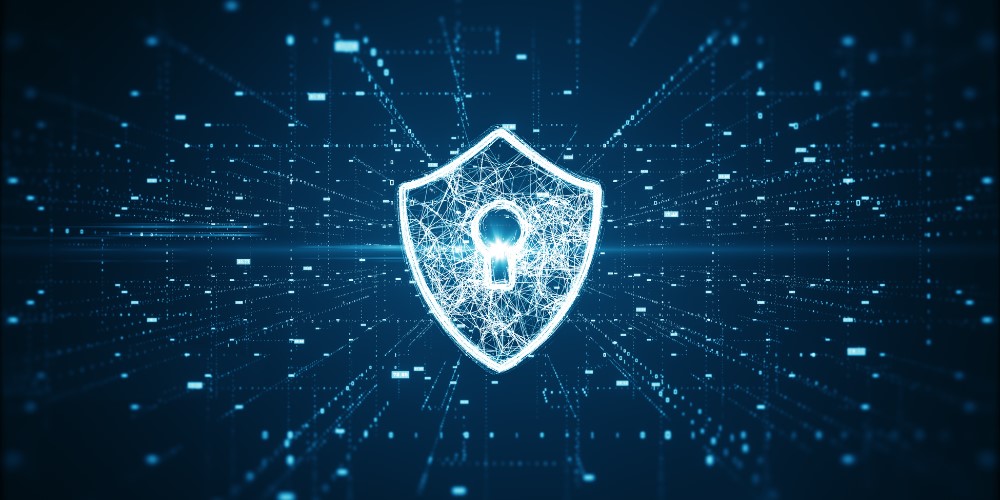Compliant and Secure: The Role of VAPT in Meeting Regulatory Requirements

Cybersecurity regulations have been evolving rapidly, and businesses face increasing pressure to ensure data protection and maintain compliance. The relentless advancement of technology has introduced new threats and vulnerabilities that require proactive measures and continual adaptation. As hackers and cybercriminals become more sophisticated, the regulatory landscape must keep pace to address emerging risks and safeguard sensitive information. This dynamic environment necessitates a proactive and agile approach to cybersecurity, where businesses must stay informed, updated and prepared to navigate the evolving landscape effectively.
Non-compliance, or failing to adhere to established rules and regulations, can have serious consequences. It can result in severe penalties, such as fines or sanctions, which can have a significant financial impact. Moreover, non-compliance can also lead to tarnished reputations, as it reflects poorly on the individual or organisation involved. In some cases, it may even lead to potential legal actions, including lawsuits or criminal charges. Therefore, it is crucial to prioritise compliance to avoid these negative outcomes.
In Part 2 of our 5-part blog series on vulnerability and penetration testing (VAPT), we explore how VAPT services demonstrate commitment to data protection and cybersecurity compliance.
1. Navigating the complex world of cybersecurity compliance
The regulatory landscape is complex and constantly evolving, making it challenging for businesses to keep up. Moreover, different industries may have varying compliance requirements based on their specific risks and vulnerabilities. For instance, healthcare organisations must adhere to HIPAA regulations, while financial institutions are subject to the Gramm-Leach-Bliley Act (GLBA) and the Sarbanes-Oxley Act (SOX).
Regulatory agencies are introducing new laws and requirements to protect consumer data. Consider the European Union’s General Data Protection Regulation (GDPR), the California Consumer Privacy Act (CCPA) in the United States, the Personal Information Protection and Electronic Documents Act (PIPEDA) in Canada, and the Personal Data Protection Act (PDPA) in Singapore. These regulations aim to ensure that individuals have control over their personal information and that organisations handle and process data responsibly.
Companies must implement stringent security protocols in order to remain compliant with these regulations. While many organisations have adopted technical safeguards such as encryption and multi-factor authentication, they must also take a proactive approach to cybersecurity and assess their vulnerability to attacks.
To navigate this complex world of compliance, businesses must conduct regular risk assessments to identify potential vulnerabilities and prioritise their efforts accordingly. Implementing industry best practices and frameworks, such as the National Institute of Standards and Technology (NIST) Cybersecurity Framework or International Organisation for Standardisation (ISO) 27001, can also help organisations demonstrate their commitment to compliance.
The first step in ensuring compliance is understanding the diverse array of regulations and standards that apply to a business. Compliance requirements differ across industries and regions. Organisations must be sure to stay up to date on the latest regulations and adjust their security strategies accordingly. This can be a daunting task, especially for smaller businesses with limited resources and expertise in the field.
2. Recent trends and tactics in cybersecurity compliance
With the rise of remote work and cloud-based systems, organisations must upgrade their compliance strategies to account for new threats. The shift towards a more digital workplace has also led to an increase in cyber-attacks, making it necessary for businesses to continuously assess their security measures.
Moreover, data privacy regulations have placed a greater emphasis on protecting personal data. Companies must comply with these regulations to avoid hefty fines and maintain consumer trust.
1. Zero-trust compliance
Zero-trust compliance is a security model that operates under the principle of ‘never trust, always verify.’ In this model, no entity—whether inside or outside the organisation’s network—is automatically trusted. Instead, every user or system must verify their identity and permissions for each interaction or access request.
Having a zero-trust compliance ensures that only authenticated and authorised users and devices can access applications and data, thereby significantly minimising the potential for data breaches. It is a proactive approach to cybersecurity – it reinforces the necessity of continuous validation of trustworthiness to meet regulatory compliance.
2. Shadow compliance
Shadow compliance refers to the scenario when employees or departments use unauthorised technologyies or workflows without the knowledge or approval of the organisation’s IT or compliance departments. This practice could potentially breach regulatory rules and expose the organisation to significant cybersecurity risks and legal penalties.
3. Cyber-housekeeping
Cyber-housekeeping is essentially the practice of maintaining and updating cyber security protocols to keep your business compliant. This includes regularly performing vulnerability assessments, patch management, user education programmes, access control audits and other measures to ensure that all systems are secure and up to date with industry standards. It helps mitigate risks associated with possible data breaches as well as regulatory non-compliance.
4. Employee training and awareness
A key part of cyber-housekeeping is employee training. In companies that practice cyber-housekeeping, all staff members are aware of the firm’s compliance policies and that they follow them accordingly. Regularly training employees on cyber security practices is critical to keeping your organisation compliant.
Human error is often a leading cause of data breaches. As such, it’s crucial for businesses to invest in employee training and education on cybersecurity best practices. This includes developing strong password policies, recognising phishing attempts, and understanding the importance of data privacy. Educating employees will help businesses can reduce the risk of accidental data breaches and create a culture of security awareness.
3. Integrating VAPT into the Compliance Strategy
Organisations must be proactive in their approach to data security, and VAPT services can be an essential component of meeting this goal. Businesses can leverage the expertise of specialised professionals to keep their systems and data secure from potential threats. They can rest assured that they have taken the necessary steps to protect their customers and remain in compliance with applicable industry standards.
VAPT services offer a structured and systematic approach to meet compliance requirements. Businesses can collaborate with cybersecurity experts to develop a tailored compliance strategy that aligns with their specific industry and regulatory demands.
VAPT services can help companies assess their current security posture, identify vulnerabilities, and implement appropriate measures to mitigate risks. Regular vulnerability testing and penetration testing are crucial to maintaining compliance and protecting sensitive data.
Companies can also benefit from ongoing monitoring services, which provide real-time threat detection and response. This allows businesses to proactively address any potential security breaches that may compromise their compliance status.
4. How do VAPT services help with compliance?
VAPT services help organisations identify and mitigate potential security gaps in their IT infrastructure. Through a combination of automated scans, manual penetration tests, and social engineering assessments, VAPT can detect vulnerabilities that could be used to gain unauthorised access to critical systems and data. This detailed analysis reveals how well an organisation’s security practices are protecting against malicious attacks and ensures compliance with relevant regulations.
VAPT services are not only important for demonstrating compliance, but also for safeguarding the privacy of customer data. As more businesses transition to a digital-first approach, it is essential to ensure that customer information remains secure throughout the entire process. VAPT helps organisations identify any existing vulnerabilities that could potentially put sensitive data at risk and provides advice on how to protect against future threats.
Furthermore, VAPT services should be included in an organisation’s long-term security strategy to ensure continuous protection and compliance. Regular testing and assessment can identify any issues that arise over time and help businesses maintain their security posture.
With VAPT solutions, businesses can quickly identify any non-compliance issues and take corrective measures. This will enable organisations to meet the necessary requirements for all applicable regulations while ensuring that customer data remains secure.
In addition, VAPT services can help businesses assess any changes to their IT infrastructure and ensure that all systems remain secure and compliant. This will enable organisations to remain agile in the ever-changing landscape of cybersecurity regulations.
In essence, VAPT services help organisations understand the diverse array of compliance requirements so that they can protect their data and customers while remaining compliant with applicable regulations. With the right strategy, businesses can maintain a secure environment and ensure peace of mind for their customers.
5. Auditing and reporting with VAPT
Transparency is crucial when it comes to compliance reporting. VAPT findings provide valuable data for internal and external audits, giving stakeholders confidence in the business’s commitment to data protection.
Organisations should document all findings from VAPT assessments, including the specific risks and vulnerabilities identified as well as steps taken to address them. This data can then be used for reporting and auditing purposes, helping meet compliance requirements and demonstrate the organisation’s commitment to security.
VAPT assessments also provide organisations with valuable insights into their security posture, allowing them to track and measure security performance over time. This data can be used to inform strategic decisions, prioritise investments in security, and drive improvements for the future.
6. The benefits of regular VAPT assessments
Regular VAPT assessments offer numerous benefits to organisations, not thee least of which is demonstrating their commitment to maintaining a secure environment for data and customers. To sum up, here are the key benefits of regular VAPT assessments:
1. Compliance: Businesses can ensure compliance with industry standards and regulations by regularly identifying and addressing vulnerabilities. This reduces the risk of fines and penalties.
2. Risk reduction: Regular VAPT assessments help mitigate the risk of data breaches and other security incidents. This protects sensitive information and maintains customer trust.
3. Legal and reputational protection: Failing to address identified vulnerabilities can lead to legal action and reputational damage. Comprehensive VAPT assessments provide organisations with valuable insights to proactively address vulnerabilities.
4. Enhanced decision-making: VAPT assessments offer valuable insights and information, empowering organisations to make proactive decisions to effectively protect their assets and customers.
5. Competitive edge: Investing in a strong security strategy, which includes regular VAPT assessments, helps organisations stay competitive in the digital age.
7. Additional Resources
Maintaining compliance with evolving cybersecurity regulations can be a challenge. Organisations looking to stay ahead of the curve should make sure to take advantage of all available resources. Here are some additional resources that may be helpful:
• U.S Department of Health & Human Services: The HHS website provides comprehensive information on all applicable regulationns and standards, including HIPAA, for health care organisations.
• GDPR Guide: This guide offers an in-depth look at the GDPR requirements along with resources for understanding and implementing the regulations.
• NIST Cybersecurity Framework: The NIST Cybersecurity Framework provides guidance for organisations looking to strengthen their cybersecurity posture, including best practices and compliance requirements.
With the right combination of VAPT services and additional resources, organisations can maintain their security posture while protecting their data and customers.
8. Conclusion
In today’s digital landscape, cybersecurity is crucial for organisations of all sizes. Regular VAPT assessments are an essential component of a strong security strategy – they provide valuable insights and ensure compliance with regulations and standards.
Investing in VAPT services will help organisations stay secure, competitive, and compliant in the ever-changing world of technology. Don’t wait until it’s too late – prioritise your organisation’s cybersecurity today. Be proactive so that you can protect your data and your customers’ data while staying ahead of potential cyber threats.



















